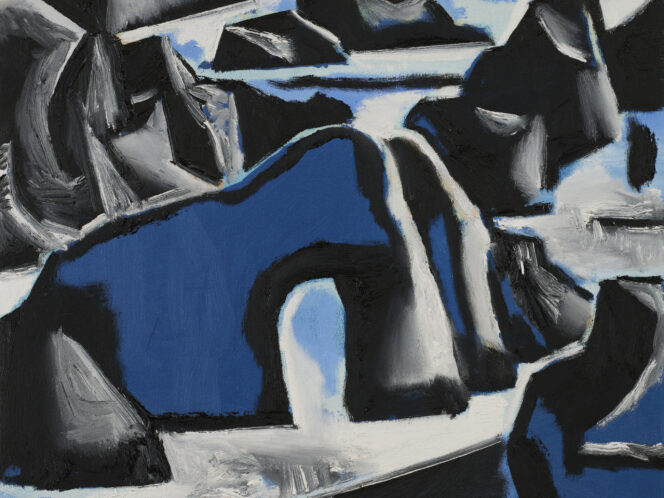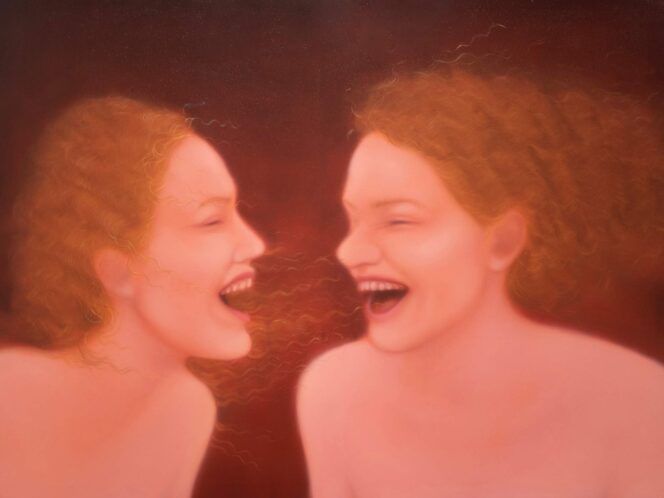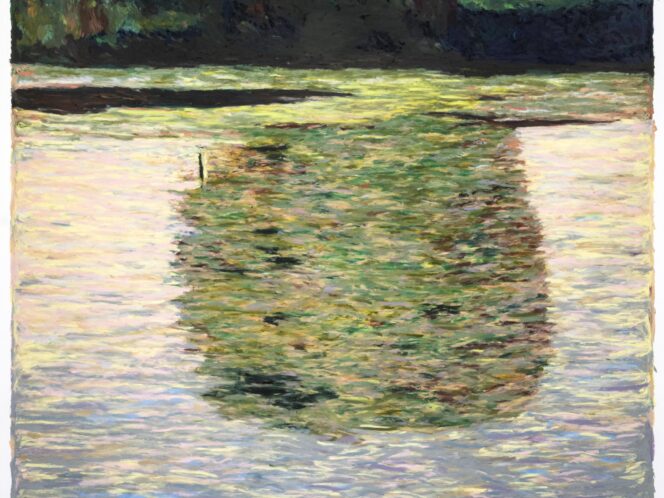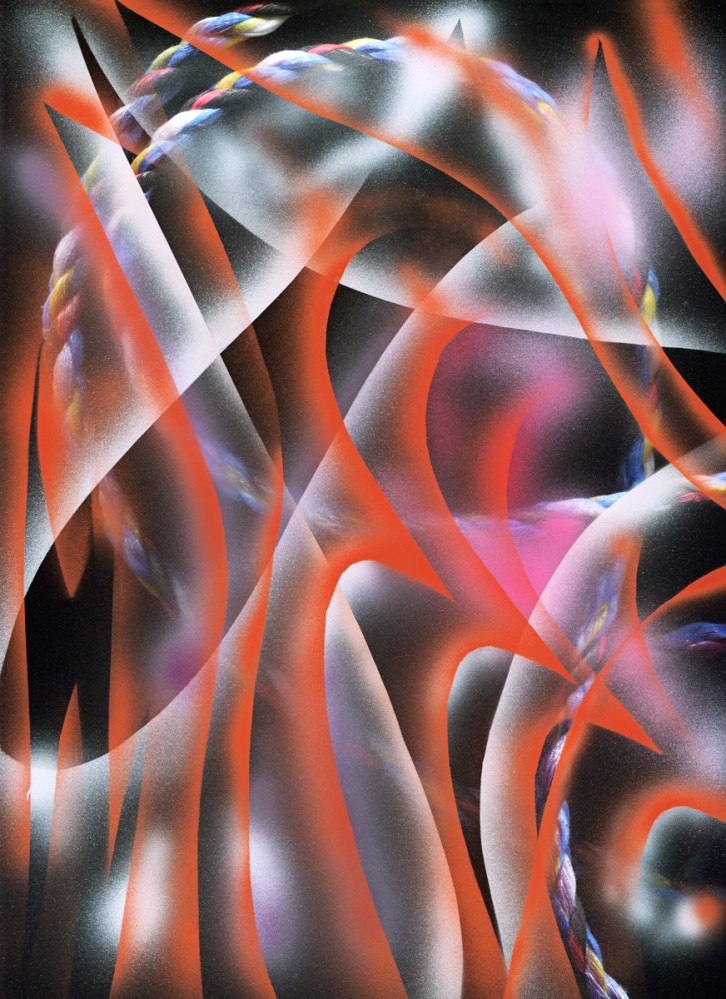
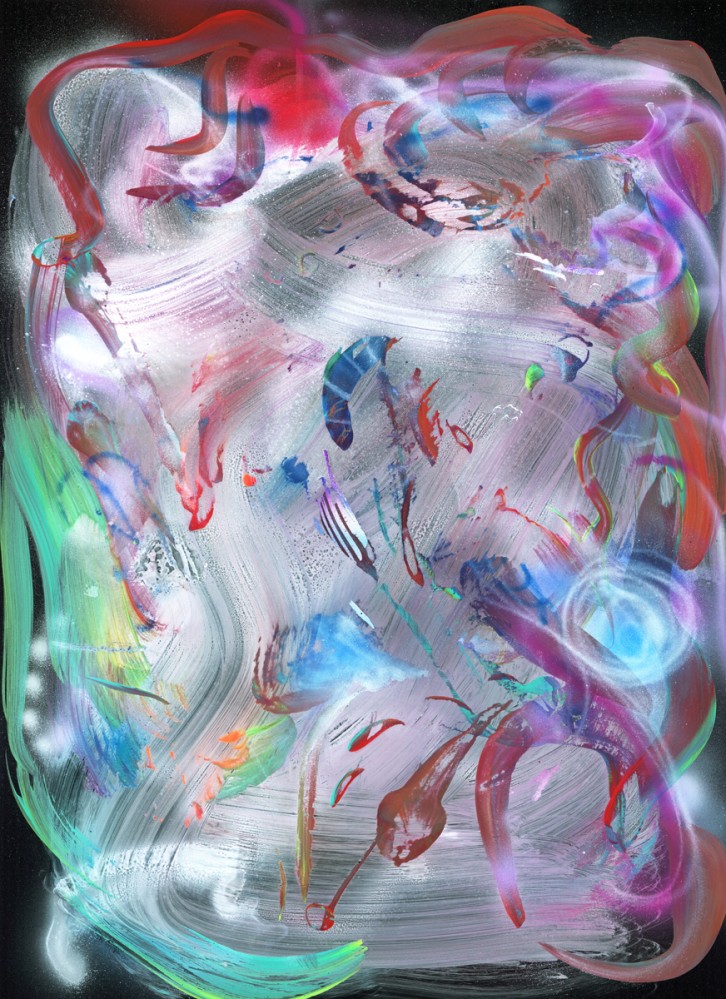
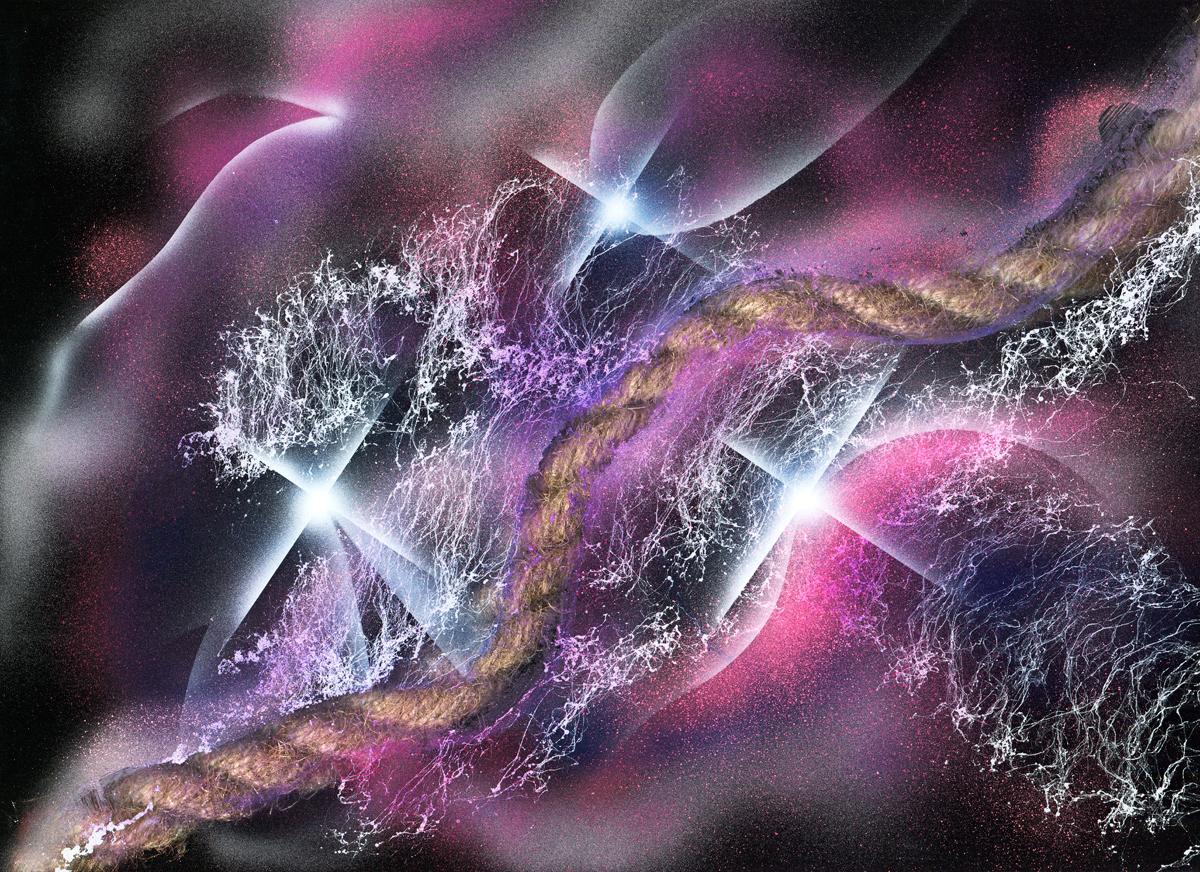
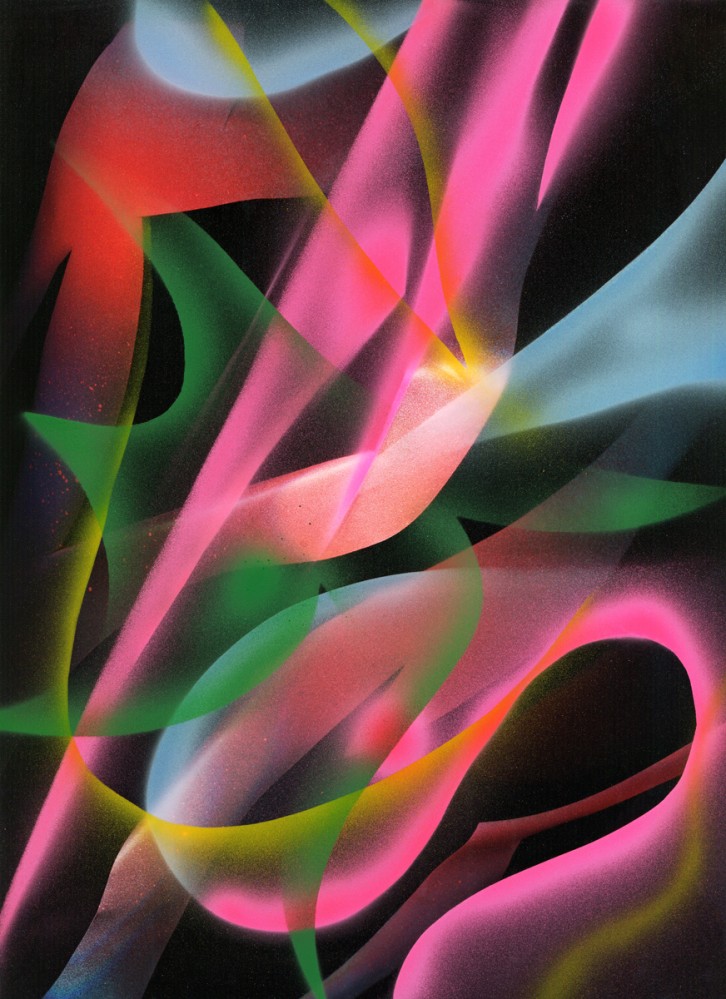
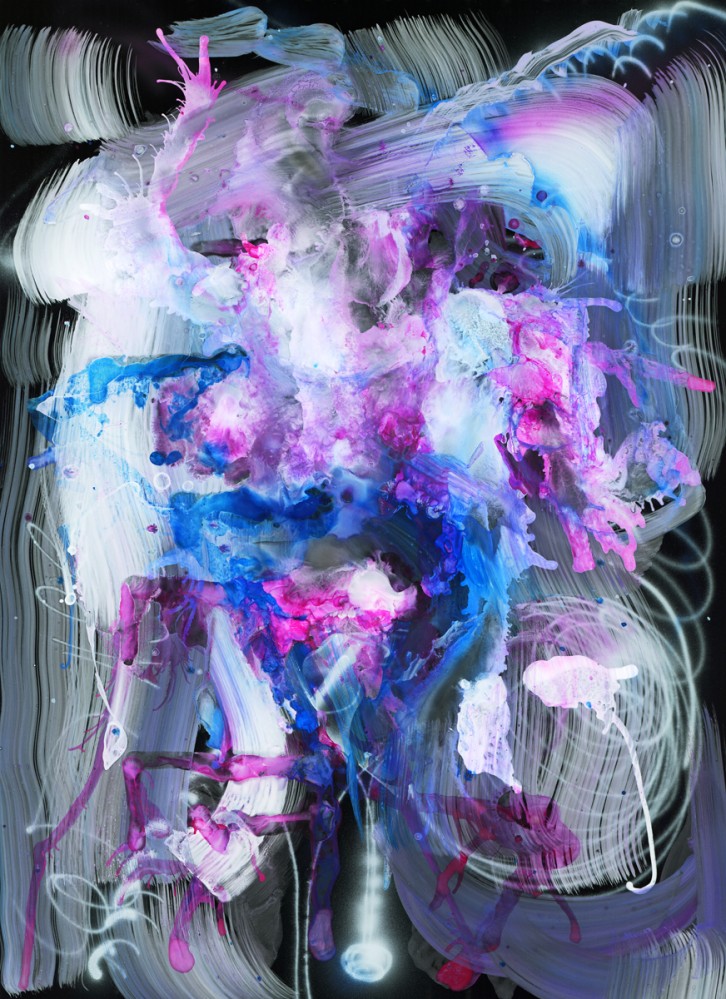
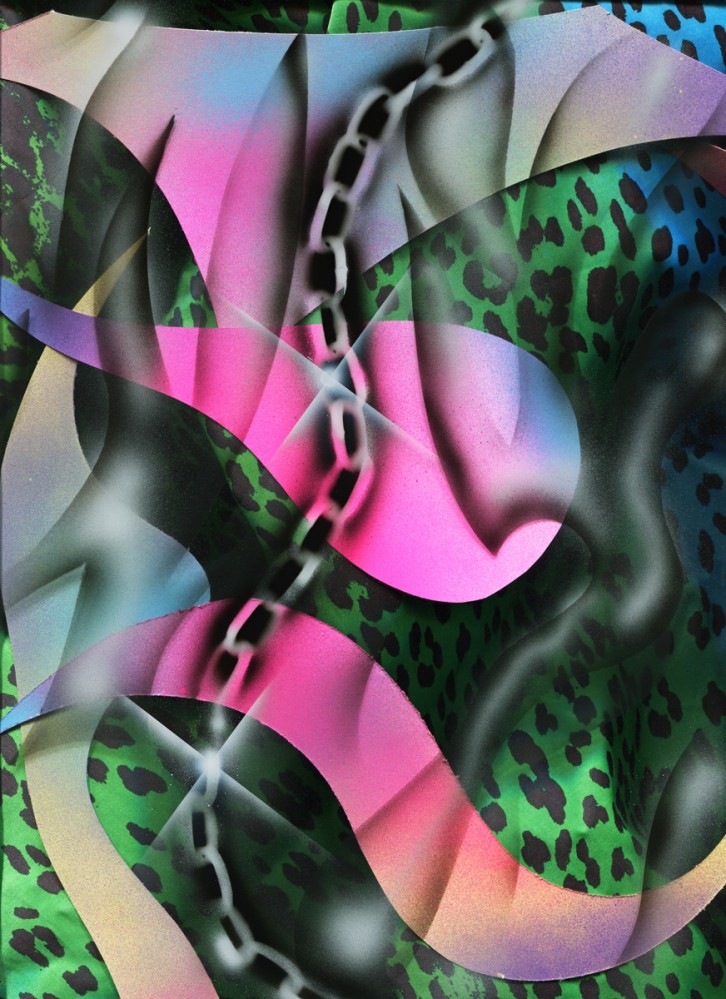
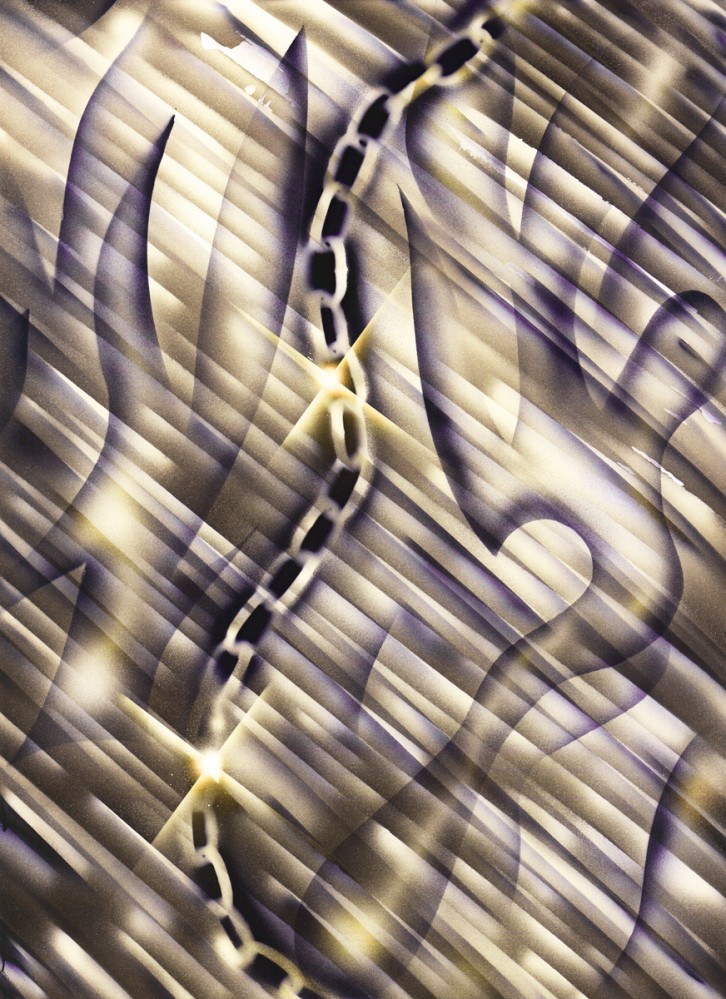
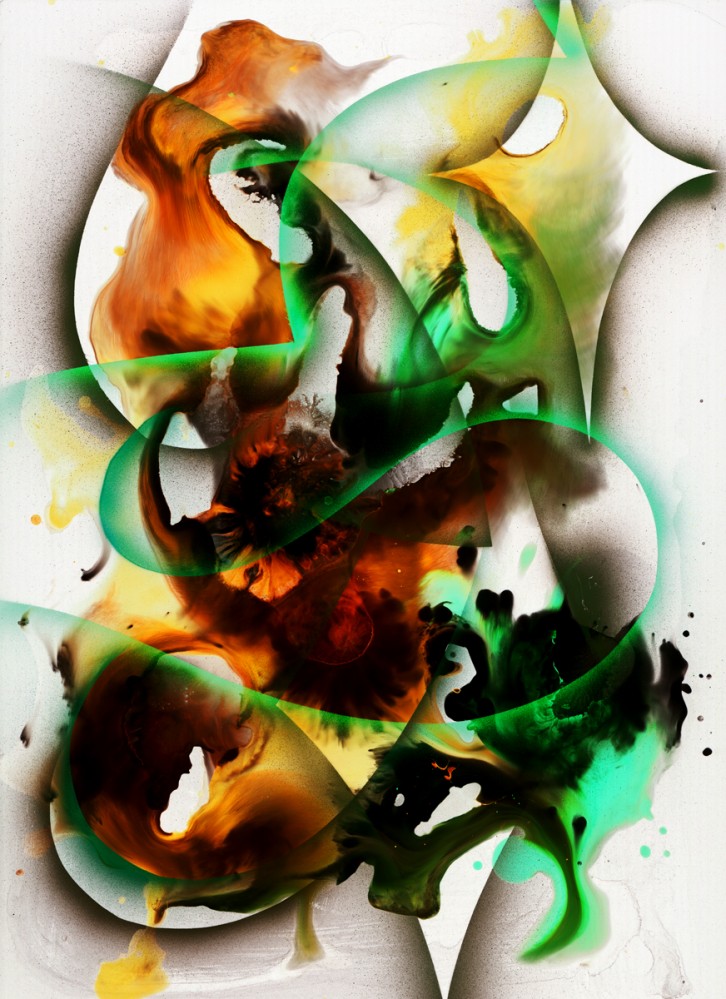
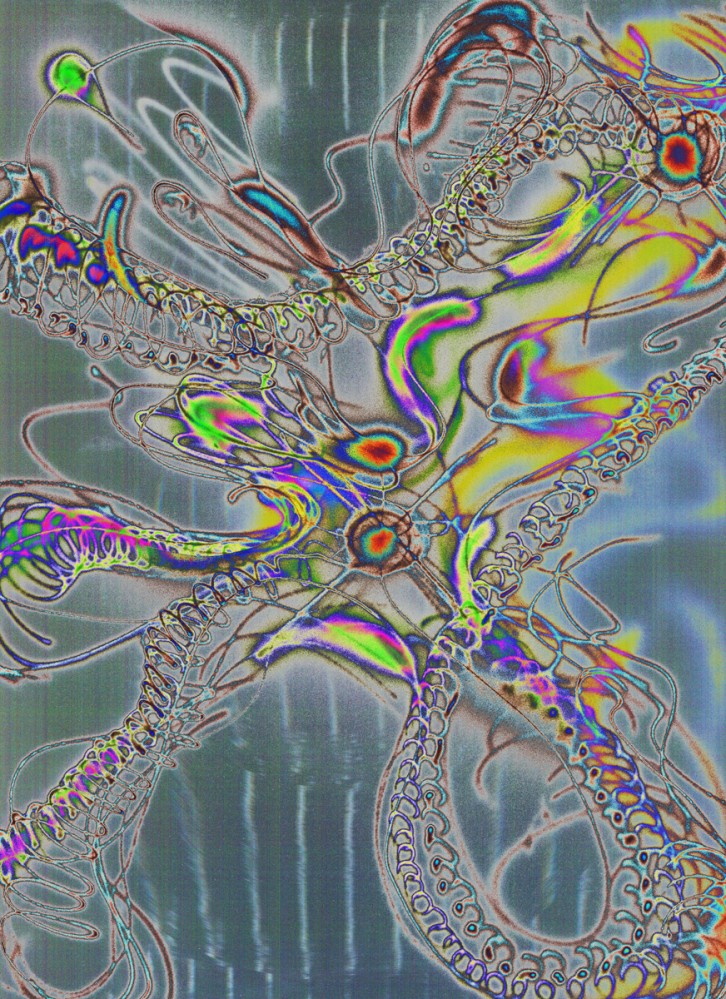

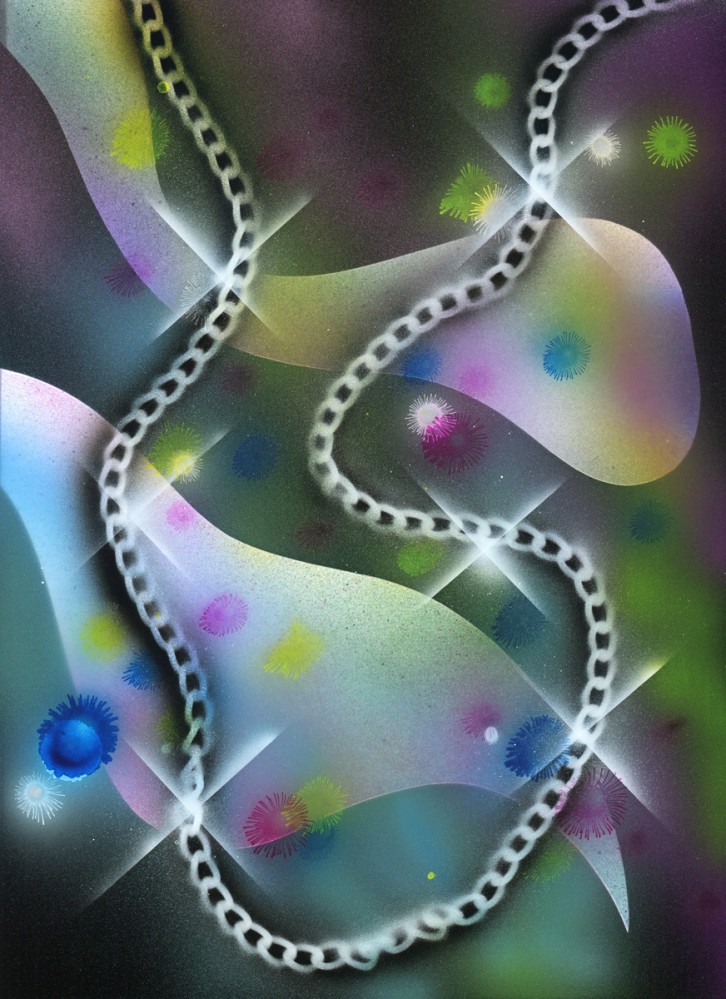
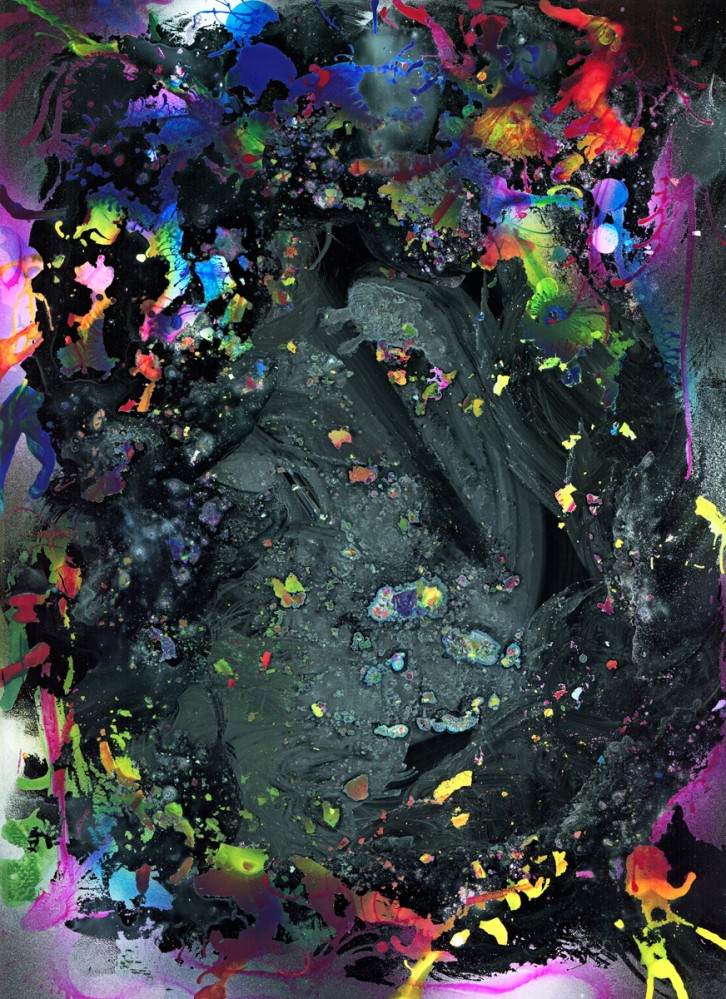
Sławomir Pawszak’s photograms are genetically consistent with the direction of artistic experiments focused on “drawing”, or rather “painting” with light. In form, his works are the closest to Karol Hiller’s heliographic images, albeit more for the idea they follow rather than the technique as such.
In 1933, Hiller met a scientist Ary Sternfeld in Łódź. Sternfeld was working on his Introduction to Cosmonautics. Both men shared a passionate fascination with space. Hiller designed a cover for the French edition for Sternfeld’s work – the book failed to find a publisher in Poland, where his theories and calculations were considered mad-scientist fantasy. Pawszak creates his art using a scanner and computer, experimenting with forms and techniques. He makes images by spreading transparent paint on the scanner glass, merging them with enlarged images of parts of various objects and shapes. This technique produces images of open, seemingly abstract form, whose structure is fragmented and syncretic. The light makes shapes elude their solid forms and substance; they become transparent, filtering through one another. Sometimes, islands emerge, illuminated with flashes of light, as if brightened by explosions of cosmic energy. Realistic elements coexist with fantasy, creating images of a foreign universe. In his photograms, Pawszak invents singular visions of a macro-world by assembling enlarged images from a micro-world, as if fabricating a pictorial “Universe in your hand”, as in the title of Christophe Galfard’s bestselling book. The artist seems to be searching for his own idiosyncratic technique; it doesn’t really matter how we call his works: photographs, photograms, or something else entirely. Perhaps it was Man Ray who explained it best when he wrote: “Of course, there will always be those who look only at technique, who ask ‘how’ while others of a more curious nature will ask ‘why’. Personally, I have always preferred inspiration to information.”
Lech Stangret
Sławomir Pawszak – painter, the author of installations and photographs. He was born on 1984 in Warsaw. He studied painting at Academy of Fine Arts in Warsaw. He got his diploma in Leon Tarasewicz atelier. Selected solo exhibitions: Diploma exhibition, Center for Contemporary Art Zamek Ujazdowski, Warsaw (2008); Forty degrees in shade, Czarna Gallery, Warsaw, Pawszak feat. Przezwańska, (in cooperation with Katarzyna Przezwańska) Galeria A, Warsaw (2009); New works, BWA Gallery, Zielona Góra (2012); Cannabis, whisky, ananas, BWA Warszawa, Warsaw (2014); Eternal lunch, Griffin Art Space, Warsaw (with Cezary Poniatowski) (2017). Selected group exhibitions.: Ain’t no sorry, Museum of Modern Art, Warsaw (2008); No sleep!, BWA Gallery, Zielona Góra (2010); Meta-White, Freies Museum, Berlin (2011); As You Can See; Polish Art Today, Museum of Modern Art, Warsaw (2014); Art in our age, Zachęta – National Gallery of Art, Warsaw (2015); Painting or not, Kaviar Factory, Henningsvær, (2017)



